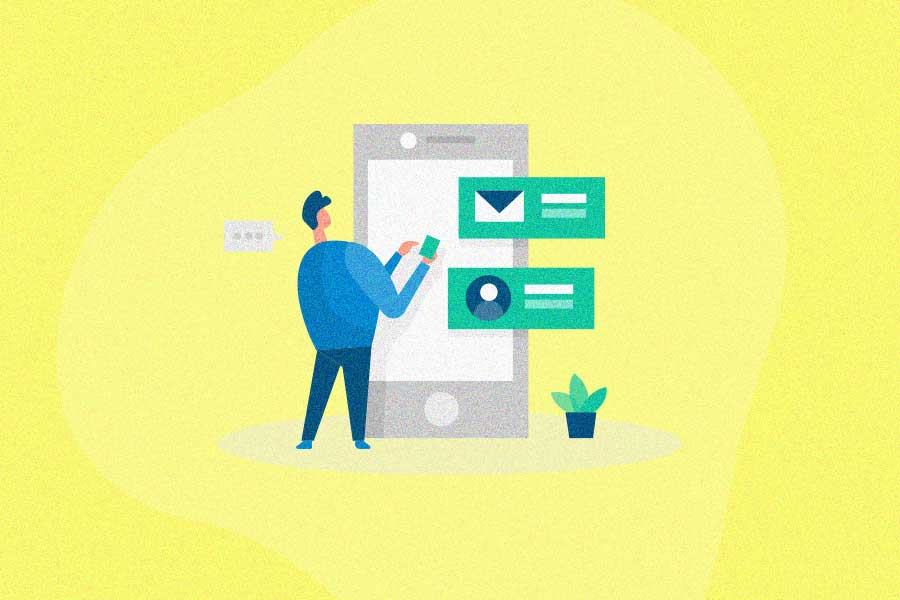If you want to gain an edge over your competitors and create the most successful referral program, it’s important to learn the three most common referral program killers, and how to stop these situations from happening.
The 3 biggest mistakes brands make with referral programs
When a referral marketing program is set up correctly, this can quickly lead to an increased number of targeted and qualified leads. But not if you’ve stumbled into the pitfalls that stop sharing, and referral conversions, in their tracks.
So, what are these silent referral program killers? Here at Referral Rock, we analyzed 339 referral programs (some created with Referral Rock, some out in the wild) and discovered the top three mistakes companies make.
- Missed promotion opportunities after the launch
- No reward for the friend
- Sending the friend to a page with no context
Here’s why these mistakes matter, and how to avoid them for maximum referral program success.
Mistake 1: You missed out on post-launch promotion opportunities
Lack of promotion is the #1 reason our customer service team identifies when helping companies find out why their referral programs are failing.
When we’re talking about lack of promotion, we mean lack of consistent promotion after the launch. Many marketers excitedly share the program with customers and fans right as it launches, but then just leave it be and think it will promote itself.
We’ve seen lots of businesses lose momentum, shift their focus to new projects, and neglect their initial promotion strategies. There’s a common misconception that simply creating something great will attract attention, that “if you build it, they will come.” So many businesses spend endless hours perfecting the reward structure, fine-tuning the messaging, and establishing integrations, yet they often leave the promotion to chance. That’s a serious problem!
People forget things. Making your program discoverable and consistently reminding them it’s there is essential, because today’s world is full of distractions.
The best programs take a multi-channel approach to promotion that combines:
- Campaigns: active outreach and reminders to potential and current sharers
- Access points: places where people can find and access the referral program
- Notifications: referral program event-based emails
- Recruiters: your team (i.e., sales reps, service reps, employees) and external partners that recruit people to share
Campaigns
Campaigns are direct emails to potential and current sharers, focused completely on the referral program. You’ll want to use a mix of outreach campaigns that get potential sharers’ attention, and reminder campaigns that keep existing sharers engaged.
We recommend using all these types of campaigns:
- Mass outreach campaigns: Tell everyone on your email list about your program monthly to quarterly
- New sharer campaigns: Reach out to new customers, and any other customers who haven’t yet joined the program
- Monthly Summaries: Give each sharer a personalized overview of their referral program activity every month
- Targeted campaigns: Reach out to specific customer segments
- Personal outreach: Send personal emails to your most active sharers
- Reminder campaigns: Remind people who have joined the program, but haven’t shared within a given quarter, that the program exists
Access points
Don’t just use dedicated email campaigns to promote your program. Instead, complement those emails by promoting your program on lots of other different channels, based on the touchpoints you already use to connect with customers. The more ways people have to access the program, the more likely they are to join or re-engage with it.
We suggest using access points like:
- Email newsletters
- Update emails (include a one-sentence promo in emails about sales and other business events)
- Transactional emails
- Email signatures
- Your website (banners, footers, site navigation, CTA buttons, etc.)
- Checkout or thank-you pages (right after a purchase)
- In-app (in your customer portal, behind a login, or in your mobile app)
- Social media posts
- Account notifications
- Business cards, postcards, or other printed material (include a QR code for easy online access!)
- In-store signage
Notifications
Notifications, or event-based invites, let you reach new and existing members at their happiest times – the times they’re most primed to share with friends.
We recommend sending notifications right after someone makes a purchase, completes onboarding, or meets any other condition that shows they’re happy.
Notifications after someone earns a referral reward fall into this category, too. Let the sharer know they’ve earned the reward and encourage them to earn more by sharing with more friends.
Recruiters
This piece is all about getting your team, and other external partners, to encourage referrals at the right times. Make sure your team is aware of how your program works, and knows the best times to ask people to join.
Just like with the notifications, it’s all about asking when people are happiest:
- After a purchase
- On a subscription anniversary or project anniversary
- When they leave a stellar review or social comment
- When they give positive feedback
- When you know they’ve recommended your business outside of the program
Instead of just simply asking for the referral, though, your team should give potential sharers a direct link to your program (or, if talking in person, a QR code that directs people to the program page).
Mistake 2: You forgot the friend reward
Too many businesses don’t reward the friend and focus solely on rewards for the referrer (i.e. sharer).
Of the 339 referral programs we analyzed, 54% made the big mistake of NOT rewarding the friend.
Why does this matter? A lot of this is about the psychology of the sharer. People don’t want to “sell out” their friend just to get a reward for themself. That doesn’t feel very, well, friendly. So, they won’t feel as motivated to share with friends if they’re the only one getting something out of it.
A headline that says “Give your friend $25 (and get $25 for yourself)” looks way better than one that says “Refer and you get $25.”
If you don’t yet have a friend reward, that’s a relatively easy fix. Providing a two-way incentive – so that both the customer and their friend get something – seems a lot less self-serving.
Rewarding the friend changes the conversation and gives you more flexibility with your messaging. It’s no longer about “me, me, me” or “earn, earn, earn” (people quickly get tired of this). Now it’s about “give, give, give” – and who doesn’t want to give something special to their friends? You’ve changed the reward to be a lot more altruistic.
And on the friend’s end, your business offer looks way more compelling. Since there’s a reward involved, they’re much more likely to click on the message their peers send, and are ultimately more likely to become your customer. They’re also super thankful that their friend sent them the offer.
To sum it all up, here are the key reasons offering a reward for the friend works:
- The sharer feels good about helping their friend (gains social capital / leans into altruism)
- The sharer doesn’t feel guilty about getting rewarded in return.
- The friend is motivated to make a purchase (increases conversion)
- The friend appreciates the sharer’s generosity
Find out the other most common reward mistakes, and how to avoid them, by watching this video:
Mistake 3. You sent the friend to a page with no context
You might have thought a lot about what the sharer experiences in your program. But what about the friend’s experience after they click? The friend needs to have a good first impression of your brand. This means providing them with all the necessary steps to become an actual customer.
Sending referred friends to a generic page, with no context on the business or explanation of why they should care, is another massive referral program killer.
42% of referral programs use generic referral pages instead of personalized ones.
Common examples of generic pages include the homepage, Contact Us form, Demo form, and checkout page.
Sending referrals to generic pages creates a disconnected and jarring experience. The message doesn’t match with the shared message, the friends don’t feel special, and they don’t know the business (a recipe for a bad first impression). All of this leads to fewer referrals converting.
The page friends land on is the first impression a referral will experience with the brand. If the messaging is weak right from the start, it will likely be difficult to turn prospects into believers. It’s also confusing for a referral to click a link and land directly on the homepage of a website. They might not know what they should do next.
Remember, the friends are just figuring out what you do. If they click their peer’s referral link and are brought to a page that is confusing, or are just plopped right onto the homepage, they will likely be discouraged. This can cause the referral to second guess themselves, and, because of that, a conversion might not happen.
Instead, you want a smooth journey where the referral:
- Hears about the business from their friend (i.e., the person sharing)
- Clicks on a link or message to learn more about the business/offer
- Explores a personalized referral page that explains the benefits (why they should care), shows the referral offer (motivates action), and includes a simple CTA (reduces friction).
Providing a personalized landing page experience is all it takes. Remember, this audience is not like your others. With a personalized referral page, you get to leverage the trust people place in the referrer as an “unfair” advantage vs. your normal landing pages.
You can use a simple pop-up to let friends know they got an exclusive discount from their peer, and that the discount has been applied to their cart. Make transitions as seamless as possible, and directions and information easy to understand. For example, don’t leave them wondering if the reward will be applied, or if they have been successfully linked to the right referrer.
Avoid these referral program killers!
So, there you have it: the three major referral program killers, and how to fix or avoid them.
For more help in preventing these and other mistakes, we’ve launched our program advisor services to help customers with reward recommendations, tailored program and campaign messaging (written for you), technical integration assistance, and more. Check out how this works here.






